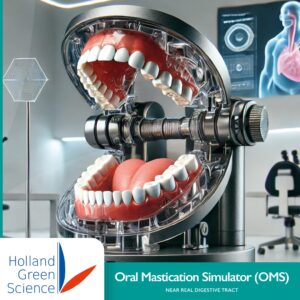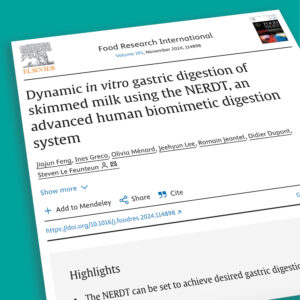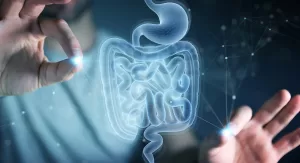Introduction
In the grand theater of life, biomechanics orchestrates the harmonious functioning of living organisms, offering a deep understanding of the mechanical processes that facilitate the efficient breakdown of food in our digestive system. Let us embark on a journey through the digestive symphony, guided by the maestro of biomechanics and the genius invention of Prof. Chen, the NERDT™.
Short Summary
- Biomechanics: The maestro conducting the digestive symphony.
- Key players in the gastrointestinal orchestra: distensibility, smooth muscle function, the enteric nervous system, and connective tissue structure.
- NERDT™: Prof. Chen’s revolutionary tool tuning the digestive orchestra to perfection, promising ethical and accurate insights into digestive disorders.
Understanding the Role of Biomechanics in Digestion
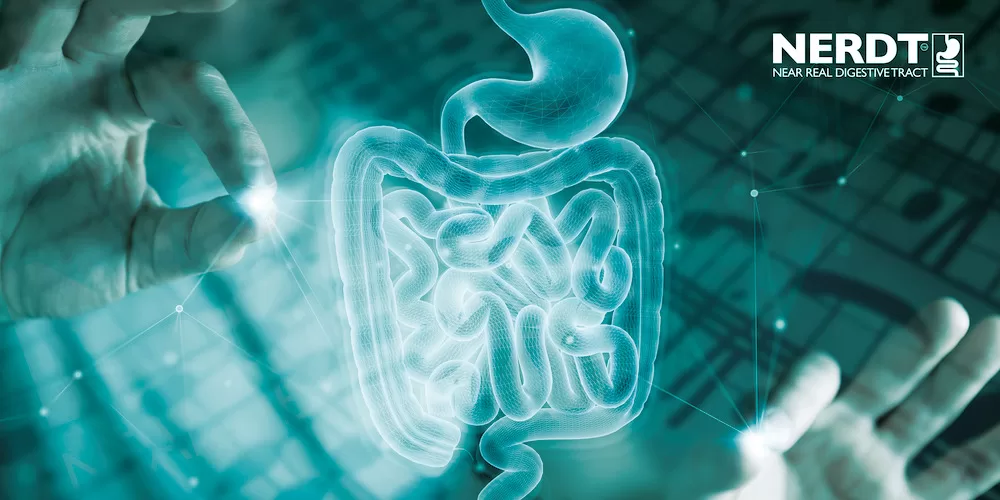
Biomechanics stands as the conductor of the intricate orchestra that is the gastrointestinal tract, orchestrating a harmonious performance that ensures successful digestion and nutrient absorption. It is a field that demands a deep understanding of the individual instruments (organs) and how they play together to create a symphony of digestion, a vision brought to life through Prof. Chen’s innovative approach.
What is Biomechanics?
Biomechanics is the interdisciplinary maestro that studies the mechanical aspects of living organisms, offering a lens through which we can understand the forces at play in biological systems, including the digestive system. It guides us in understanding the harmonious interactions within various organs, painting a vivid picture of the digestive ballet, a concept that Prof. Chen has passionately pursued.
Importance of Biomechanics in the Digestive System
The digestive system is a complex ensemble of organs working in harmony to process food, digest fats, extract nutrients, and excrete waste. Biomechanics conducts this orchestra, ensuring a smooth performance that is essential for both normal functioning and diagnosing mechanical alterations associated with disorders such as GERD, diverticulitis, or IBS, a mission that Prof. Chen has dedicated himself to through the development of NERDT™.
Key Components of Gastrointestinal Biomechanics
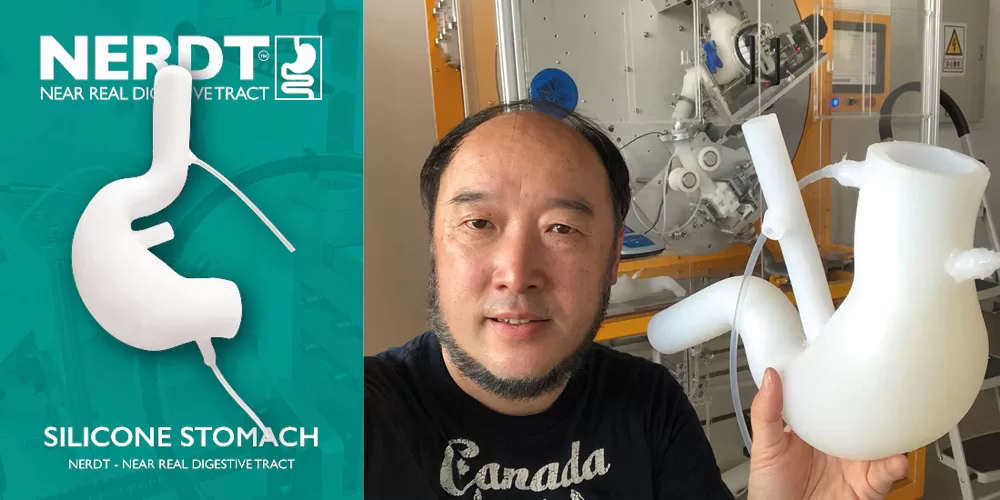
Understanding the gastrointestinal tract’s biomechanics is akin to understanding the roles of different sections in an orchestra. Distensibility, smooth muscle function, the enteric nervous system, and connective tissue structure are the key players, each contributing to the grand performance of digestion, a performance that has been further illuminated through Prof. Chen’s innovative NERDT™ technology.
Distensibility and Compliance
Distensibility and compliance are the rhythm section of the digestive orchestra, setting the pace and allowing for the absorption of water during waste elimination, thereby facilitating a harmonious digestive process, a process that Prof. Chen envisioned could be understood and optimized through biomechanical research.
Smooth Muscle Function and its Role
Smooth muscle function is the string section of the digestive orchestra, driving the rhythm and facilitating the movement of food through the gastrointestinal tract, breaking down molecules into absorbable parts, and playing a pivotal role in nutrient absorption, a role that has been brought to the forefront through Prof. Chen’s research and the development of NERDT™.
The Enteric Nervous System and its Influence
The enteric nervous system, often referred to as the body’s “second brain,” is the conductor of the digestive symphony, orchestrating various biomechanical processes to create a seamless and harmonious digestive performance, a performance that Prof. Chen has sought to understand and enhance through his groundbreaking work with NERDT™.
Significance of Connective Tissue Structure
Connective tissue structure forms the foundation of the digestive system, providing stability and facilitating the harmonious functioning of the digestive process, much like the stage that supports the performers in a symphony, a stage that Prof. Chen has sought to understand and optimize through his biomechanical research.
Biomechanical Processes Across Different Digestive Organs
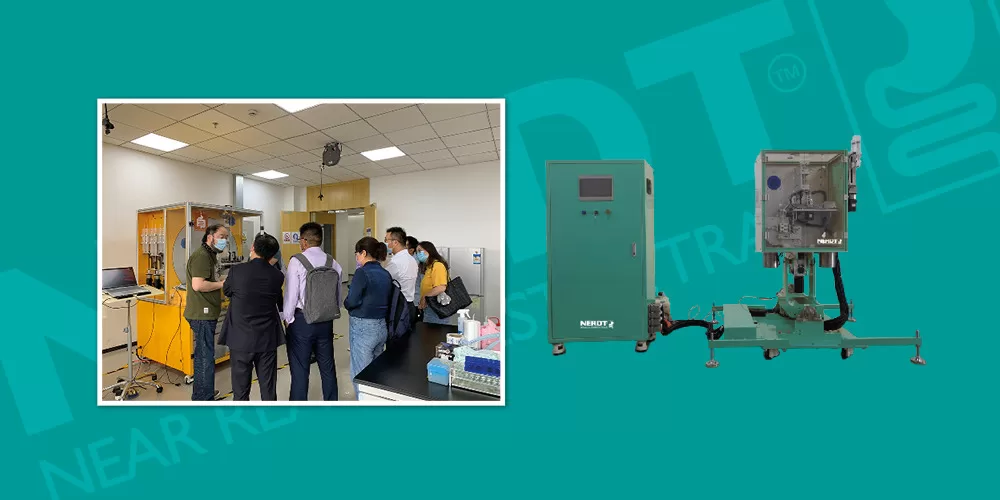
As we explore the digestive symphony, we delve into the roles of different sections such as oral biomechanics, esophageal peristalsis, and stomach churning, each playing a pivotal role in breaking down food particles and facilitating the harmonious journey through the digestive tract, a journey that Prof. Chen has dedicated his career to understanding and optimizing.
Oral Biomechanics: The Beginning of Digestion
Oral biomechanics sets the stage for the digestive symphony, initiating the breakdown of food into smaller pieces, setting the rhythm for the subsequent stages of the digestive performance, a performance that has been guided by the visionary insights of Prof. Chen.
Esophageal Peristalsis: Moving Food Downward
Esophageal peristalsis facilitates the harmonious journey of food from the mouth to the stomach, a rhythmic dance of muscle movements that ensures a seamless transition to the next phase of digestion, a transition that Prof. Chen has sought to understand and enhance through his work with NERDT™.
Stomach Churning: Breaking Down Food
Stomach churning represents the crescendo in the digestive symphony, a vigorous process that breaks down food particles into smaller pieces, setting the stage for nutrient absorption in the small intestine, a stage that Prof. Chen has sought to understand and optimize through his biomechanical research.
Biomechanics and its Link to Digestive Disorders
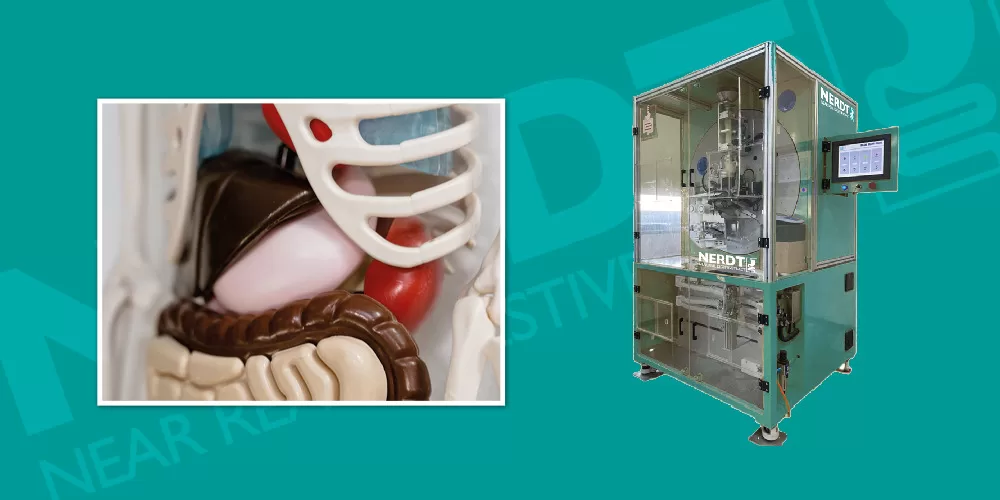
Understanding the biomechanics of the digestive system offers a roadmap to diagnosing and treating various digestive disorders, providing valuable insights into the mechanical alterations associated with conditions like GERD, diverticulitis, and IBS, insights that have been greatly enhanced through Prof. Chen’s work with NERDT™.
GERD: The Role of Lower Esophageal Sphincter Dysfunction
The lower esophageal sphincter (LES) is a key element in the diagnosis of gastroesophageal reflux disease, also known as GERD.
To get an understanding of how LES dysfunction leads to this condition, biomechanical analysis has become useful. Taking into account its structure and operation functions, along with external forces impacting it.
By analysing these factors that are responsible for the malfunction of LES, researchers can design targeted interventions aimed at treating GERD’s origin causes accurately.
Diverticulitis: Understanding Colonic Wall Compliance
Researchers can analyze the biomechanical components that are associated with diverticulitis – an infection or inflammation of outpocketings in a lower section of the large intestine – to gain more knowledge into diagnostics and treatments.
By looking at how compliant the colonic wall is, they can ascertain key facts on this digestive issue.
IBS: The Connection to Altered Gut Motility
Exploring the mechanics of the digestive system can help researchers learn about underlying causes behind IBS and other gastrointestinal disorders such as inflammatory bowel disease.
By identifying biomechanical factors, they can create more effective interventions to target these problems. Examining the biomechanics of the gastrointestinal tract is essential for a better understanding of how IBS works, allowing scientists to pinpoint relevant components within this structure which could be responsible for some conditions associated with it.
The Future of Biomechanical Research in Digestion
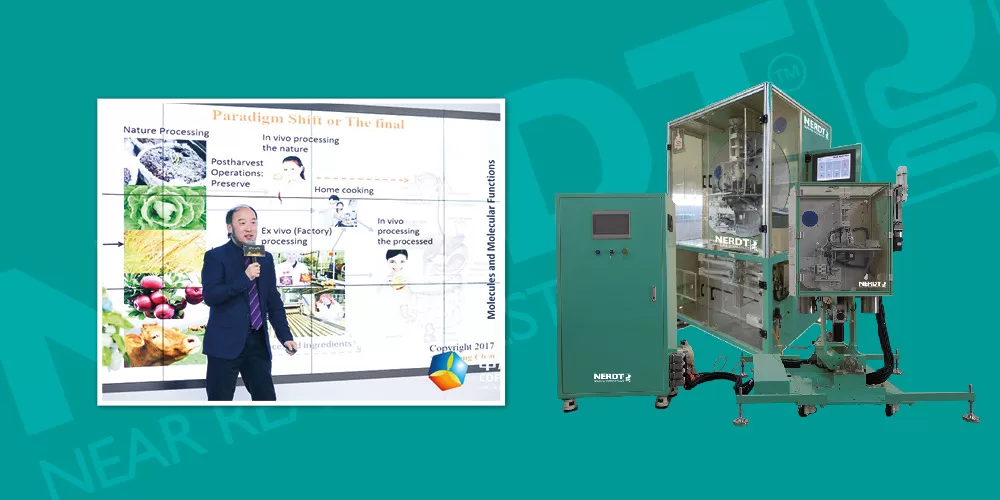
As we advance in our knowledge of the biomechanics involved with digestion, there are very encouraging prospects for future research.
This research could bring forth novel diagnoses and treatments that offer more personalized care to individuals suffering from digestive diseases.
Not only would this help us gain a greater understanding of how these complex systems work, but it may also lead to improved therapies for those affected by such disorders.
By utilizing current breakthroughs within the field of biomechanics, scientists can create reliable diagnostic tools which have far greater accuracy than what has been previously available.
The future promises innovative diagnostic and treatment strategies, guided by the deep understanding of the biomechanics of digestion, a field that Prof. Chen has passionately pioneered through his work with NERDT™.
Introduction to NERDT™ NEar Real Digestive Tract its Purpose
NERDT™, standing for Near Real Digestive Tract, represents a revolutionary stride in biomechanical research, offering a realistic simulation of digestive biomechanics and promising to redefine our understanding of the digestive system, inspired by the brilliance of Professor Xiao Dong Chen.
The simulation replicates the inherent mechanical forces and environmental conditions in which digestive juices function, providing a comprehensive understanding of the digestive system.
This innovative tool offers a realistic simulation of digestive biomechanics and promises to alter the way researchers understand this system compared to traditional animal testing methods.
It has tremendous implications in terms of understanding digestion since it enables scientists to have greater accuracy and ethical soundness while researching about gastrointenstinal tract biometrics more accurately than ever before.
Advantages of Using NERDT™ in Biomechanical Research
NERDT has various benefits for biomechanical research, such as improved precision and fewer animal experiments. With more exact measurements than can be done with animals, NERDTTM enables investigators to analyze the digestive system’s biomechanics in a far better way, allowing them to comprehend it much more thoroughly and consequently successfully treat gastrointestinal tract conditions.
This up-to-date accuracy provides an ethically responsible choice over using laboratory animals for experimentation. Ultimately leading us closer to understanding digestion issues while also respecting ethical boundaries at all times.
The advantages of reducing animal testing by using Biomechanics
Biomechanics offers a harmonious alternative to animal testing, promising a more comprehensive understanding of the digestive system while upholding ethical standards, a mission that Prof. Chen has passionately pursued through his work with NERDT™.
Novel Diagnostic Techniques for Better Understanding
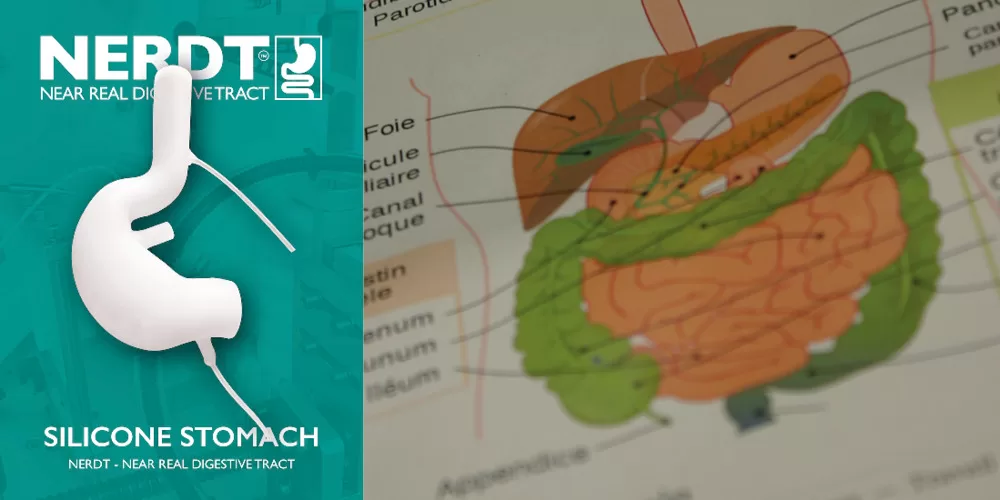
Advanced diagnostic tools, informed by biomechanical principles, have been developed to deepen our understanding of digestive and kidney diseases as well as other related conditions.
These new techniques are providing more precise results in the detection of these illnesses and allowing us to gain greater insight into their root causes. Enabling us to craft tailor-made treatments for maximum efficacy.
Doctors can now use this technology effectively diagnose both kinds of disorders while also gaining access to more effective treatment strategies at the same time.
Innovative Treatment Approaches for Digestive Disorders
By understanding the complex workings of the gastrointestinal tract, researchers are presented with an opportunity to use biomechanical knowledge in order to create transformative treatments for digestive issues.
Such interventions may range from special drug delivery systems that target underlying problems to minimally invasive surgical operations. This can make a real difference not only in patient outcomes but alsocomes but also their overall quality of life.
With innovative approaches like these, we stand at the brink of revolutionizing how such disorders are addressed and treated.
Summary
As we reach the finale of our exploration into the world of biomechanics and the digestive system, it is clear that this field holds the key to unlocking the secrets of the digestive symphony.
Through the meticulous guidance of Prof. Chen and the innovative application of NERDT™, we are on the cusp of developing personalized methods to enhance the quality of life for individuals grappling with digestive conditions.
The future of biomechanical research in digestion is bright, promising a harmonious blend of innovation and understanding that could redefine our approach to digestive health.
Epilogue: The Genius Behind NERDT™
As we take a bow in the grand theater of biomechanics, it is imperative to acknowledge the genius conductor of this harmonious symphony, Prof. Xiao Dong Chen. Born in Beijing in 1965, Prof. Chen nurtured a deep passion for biology from a young age.
Despite facing hurdles that prevented him from pursuing a formal education in biology, Prof. Chen channeled his passion into a journey through the realms of mechanical engineering, physics, and mathematics, eventually earning a Ph.D. in chemical engineering in New Zealand.
His journey did not stop there; Prof. Chen ventured into the food industry, where he solved significant challenges and planted the seeds for a revolutionary idea. His vision blossomed during his tenure at various prestigious universities, culminating in the birth of NERDT™, a groundbreaking invention that stands as a testament to his genius and dedication.
NERDT™, the Near Real Digestive Tract, emerged from Prof. Chen’s deep-seated desire to enhance the quality of life and wellbeing through a healthier approach to food and nutrition. It represents a monumental stride in biomechanical research, offering a dynamic in vitro human stomach-intestine system that promises to revolutionize our understanding of the digestive system.
Through countless hours of research and a relentless pursuit of knowledge, Prof. Chen has gifted the world with NERDT™, a tool that stands at the forefront of biomechanical research, promising a future of harmonious understanding and groundbreaking discoveries in the field of digestive health.
Frequently Asked Questions (FAQ)
Basics of the Digestive System
Q: What does the digestive system consist of?
A: The digestive system consists of a series of hollow and solid organs working in harmony to break down food and absorb nutrients. The hollow organs include the stomach, small intestine, and large intestine, while the solid organs encompass the liver, gallbladder, and pancreas. This system is largely responsible for the digestion process, which starts with the salivary glands releasing enzymes to break down food into simpler substances.
Q: How does the digestive system work with other systems in the body?
A: The digestive system collaborates closely with the circulatory, nervous, and respiratory systems. The circulatory system transports nutrients absorbed during the digestive process, while the nervous system regulates various digestive processes, including the release of digestive juices and enzymes.
Q: Can you explain how the digestive system works?
A: Absolutely. The digestive system breaks down food through mechanical and chemical processes. It starts in the mouth where the digestion starts with the help of enzymes released by the salivary glands. The food then travels down a muscular tube called the esophagus to reach the stomach where stomach muscles and digestive juices further break it down. The small intestine plays a crucial role in nutrient absorption, aided by bile from the gallbladder. Finally, the large intestine absorbs water and processes waste products, preparing them for elimination.
Specific Organs and Their Roles
Q: What is the role of the gallbladder in the digestive system?
A: The gallbladder stores bile produced by the liver, a fluid essential in digesting fats. It releases bile into the bile ducts leading to the small intestine to aid in the digestion of fats.
Q: How does the large intestine function in the digestive system?
A: The large intestine, which includes parts such as the sigmoid colon and descending colon, absorbs water and certain nutrients. It houses a rich community of gut flora that aids in breaking down undigested food and protecting against harmful bacteria. This organ also processes waste products, turning them into stool to be stored temporarily in the rectum before being eliminated through the anus, controlled by two anal sphincters.
Q: How do the salivary glands aid in digestion?
A: Salivary glands produce saliva containing enzymes that initiate the breakdown of food into simpler sugars, facilitating the early stage of the digestive process and helping to lubricate food for easier swallowing.
Q: How do the pelvic floor muscles assist in the digestive process?
A: The pelvic floor muscles provide support to the lower part of the digestive system, assisting in bowel movements by helping to control the release of stool through the coordination of internal and external anal sphincters.
Digestive Disorders and Biomechanics
Q: What are common signs of gastrointestinal problems?
A: Signs of gastrointestinal issues can vary greatly, including discomfort in the upper anus, changes in bowel patterns, and the presence of food debris in the stool. These symptoms might indicate conditions such as GERD, stomach ulcers, or issues with the descending colon. It is essential to consult with a healthcare provider if you experience persistent symptoms.
Q: How does the large intestine absorb nutrients?
A: The large intestine primarily absorbs water and electrolytes, but it also absorbs some nutrients. It houses a community of gut flora that helps in processing waste and synthesizing certain vitamins, creating a balanced environment that protects against harmful bacteria.
Q: What are the dangers associated with stomach ulcers?
A: Stomach ulcers, which occur in the stomach lining, can lead to symptoms such as pain and bleeding. They might be caused by bacterial infections, prolonged use of certain medications, or other factors. It is crucial to seek medical advice if you suspect you have an ulcer to prevent complications.
Q: How does understanding the biomechanics of the GI tract help in diagnosing digestive and kidney diseases?
A: Understanding the biomechanics of the GI tract, including how food moves through the twisting tube of the digestive system and how the body absorbs nutrients, can offer insights into the functioning and potential disorders of the digestive system. It aids in the early detection and treatment of various conditions, including digestive and kidney diseases, by providing a detailed understanding of how different organs and muscles work in harmony during the digestive process.






